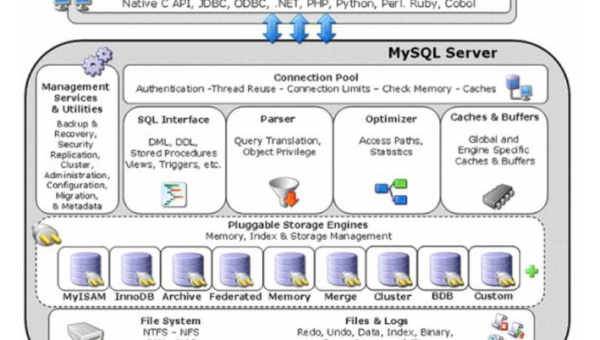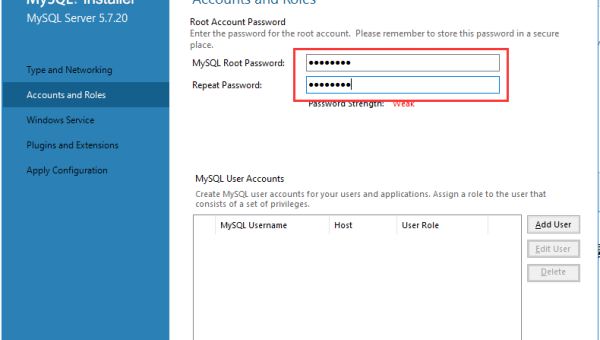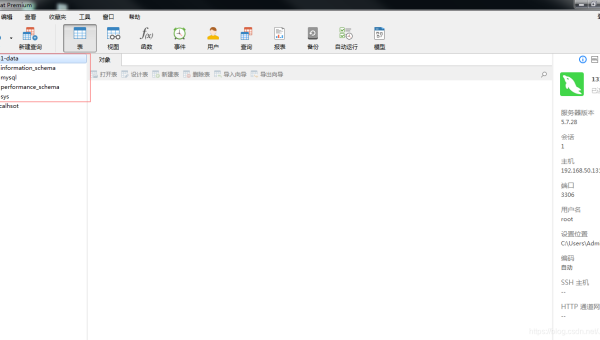MySQL(发生同步延迟时Seconds_Behind_Master还为0的原因)
MySQL,发生同步延迟时Seconds_Behind_Master还为0的原因
目录
问题描述
用户在主库上执行了一个 alter 操作,持续约一小时。操作完成之后,从库发现存在同步延迟,但是监控图表中的 Seconds_Behind_Master 指标显示为 0,且 binlog 的延迟距离在不断上升。
原理简析
既然是分析延迟时间,那么自然先从延迟的计算方式开始入手。为了方便起见,此处引用官方版本 5.7.31 的源代码进行阅读。找到计算延迟时间的代码:
./sql/rpl_slave.cc
bool show_slave_status_send_data(THD *thd, Master_info *mi,
char* io_gtid_set_buffer,
char* sql_gtid_set_buffer)
......
if ((mi->get_master_log_pos() == mi->rli->get_group_master_log_pos()) &&
(!strcmp(mi->get_master_log_name(), mi->rli->get_group_master_log_name())))
{
if (mi->slave_running == MYSQL_SLAVE_RUN_CONNECT)
protocol->store(0LL);
else
protocol->store_null();
}
else
{
long time_diff= ((long)(time(0) - mi->rli->last_master_timestamp)
- mi->clock_diff_with_master);
protocol->store((longlong)(mi->rli->last_master_timestamp ?
max(0L, time_diff) : 0));
}
......
从 time_diff 的计算方式来看,可以发现这个延迟基本上就是一个时间差值,然后再算上主从之间的时间差。不过 if 挺多的,所以借用源代码文件中的注释:
/*
The pseudo code to compute Seconds_Behind_Master:
if (SQL thread is running)
{
if (SQL thread processed all the available relay log)
{
if (IO thread is running)
print 0;
else
print NULL;
}
else
compute Seconds_Behind_Master;
}
else
print NULL;
*/
可以知道,Seconds_Behind_Master的计算分为两个部分:
那么在最后计算延迟时间的时候,看看那几个变量代表的意义:
由此可见,延迟计算的时候,实际上是以 slave 本地的时间来减掉回放的这个 event 在 master 执行的时刻,再补偿两者之间的时间差,最后得到的一个数值。从逻辑上看是没什么问题的,由于 time(0) 和 clock_diff_with_master 在大多数时候是没有什么出问题的机会的,所以这次的问题,应该是出在 last_master_timestamp 上了。
PS:虽说大部分时候没问题,但是 time(0) 取的是本地时间,因此 slave 的本地时间有问题的话,这个最终的值也会出错,不过不在本案例的问题讨论范围之内了。
那么找一下执行 event 的时候,计算last_master_timestamp的逻辑,结合注释可以发现普通复制和并行复制用了不同的计算方式,第一个是普通的复制,计算时间点在执行 event 之前:
./sql/rpl_slave.cc
......
if (ev)
{
enum enum_slave_apply_event_and_update_pos_retval exec_res;
ptr_ev= &ev;
/*
Even if we don't execute this event, we keep the master timestamp,
so that seconds behind master shows correct delta (there are events
that are not replayed, so we keep falling behind).
If it is an artificial event, or a relay log event (IO thread generated
event) or ev->when is set to 0, or a FD from master, or a heartbeat
event with server_id '0' then we don't update the last_master_timestamp.
In case of parallel execution last_master_timestamp is only updated when
a job is taken out of GAQ. Thus when last_master_timestamp is 0 (which
indicates that GAQ is empty, all slave workers are waiting for events from
the Coordinator), we need to initialize it with a timestamp from the first
event to be executed in parallel.
*/
if ((!rli->is_parallel_exec() || rli->last_master_timestamp == 0) &&
!(ev->is_artificial_event() || ev->is_relay_log_event() ||
(ev->common_header->when.tv_sec == 0) ||
ev->get_type_code() == binary_log::FORMAT_DESCRIPTION_EVENT ||
ev->server_id == 0))
{
rli->last_master_timestamp= ev->common_header->when.tv_sec +
(time_t) ev->exec_time;
DBUG_ASSERT(rli->last_master_timestamp >= 0);
}
......
last_master_timestamp的值是取了 event 的开始时间并加上执行时间,在 5.7 中有不少 event 是没有执行时间这个数值的,8.0 给很多 event 添加了这个数值,因此也算是升级 8.0 之后带来的好处。
而并行复制的计算方式,参考如下这一段代码:
./sql/rpl\_slave.cc
......
/*
We need to ensure that this is never called at this point when
cnt is zero. This value means that the checkpoint information
will be completely reset.
*/
/*
Update the rli->last_master_timestamp for reporting correct Seconds_behind_master.
If GAQ is empty, set it to zero.
Else, update it with the timestamp of the first job of the Slave_job_queue
which was assigned in the Log_event::get_slave_worker() function.
*/
ts= rli->gaq->empty()
? 0
: reinterpret_cast<Slave_job_group*>(rli->gaq->head_queue())->ts;
rli->reset_notified_checkpoint(cnt, ts, need_data_lock, true);
/* end-of "Coordinator::"commit_positions" */
......
在 Coordinator 的 commit_positions 这个逻辑中,如果 gaq 队列为空,那么last_master_timestamp直接置 0,否则会选择 gaq 队列的第一个 job 的时间戳。需要补充一点的是,这个计算并不是实时的,而是间歇性的,在计算逻辑前面,有如下的逻辑:
/*
Currently, the checkpoint routine is being called by the SQL Thread.
For that reason, this function is called call from appropriate points
in the SQL Thread's execution path and the elapsed time is calculated
here to check if it is time to execute it.
*/
set_timespec_nsec(&curr_clock, 0);
ulonglong diff= diff_timespec(&curr_clock, &rli->last_clock);
if (!force && diff < period)
{
/*
We do not need to execute the checkpoint now because
the time elapsed is not enough.
*/
DBUG_RETURN(FALSE);
}
即在这个 period 的时间间隔之内,会直接 return,并不会更新这个last_master_timestamp,所以有时候也会发现并行复制会时不时出现 Seconds_Behind_Master 在数值上从 0 到 1 的变化。
而 gaq 队列的操作,估计是类似于入栈退栈的操作,所以留在 gaq 的总是没有执行完的事务,因此时间计算从一般场景的角度来看是没问题。
问题分析
原理简析中简要阐述了整个计算的逻辑,那么回到这个问题本身,腾讯云数据库 MySQL 默认是开启了并行复制的,因此会存在 gaq 队列,而 alter 操作耗时非常的长,不论 alter 操作是否会被放在一组并行事务中执行(大概率,DDL 永远是一个单独的事务组),最终都会出现 gaq 队列持续为空,那么就会把last_master_timestamp置 0,而参考 Seconds_Behind_Master 的计算逻辑,最终的 time_diff 也会被置 0,因此 alter 操作结束前的延迟时间一直会是 0。而当 alter 操作执行完之后,gaq 队列会填充新的 event 和事务,所以会出现延迟之前一直是 0,但是突然跳到非常高的现象。
拓展一下
对比普通复制和并行复制计算方式上的差异,可以知道以下几个特点:
总结一下
严谨的延迟判断,还是依靠 GTID 的差距和 binlog 的 position 差距会比较好,从 8.0 的 event 执行时间变化来看,至少 Oracle 官方还是在认真干活的,希望这些小毛病能尽快的修复吧。
以上就是MySQL 发生同步延迟时Seconds_Behind_Master还为0的原因的详细内容,更多关于MySQL 同步延迟Seconds_Behind_Master为0的资料请关注趣讯吧其它相关文章!
推荐阅读
-

Retool 数据库连接:支持 MySQL、PostgreSQL 等多数据源配置
-

Linux如何安装和配置 FreeRadius 服务器
-

Linux怎样设置定时备份 MySQL 数据库的任务
-

在 Linux系统上安装和配置 SQL 数据库的完整教程
-

Linux中如何安装和配置 MySQL 数据库
-
windows如何安装mysql
近期有些网友想要了解windows如何安装mysql的相关情况,小编通过整理给您分享一下。MySQL作为最流行的开源关系型数据库之...
-
navicat(for mysql 过期如何解决 Navicat for MySQL如何使用)
NavicatforMySQL如何使用?1.下载NavicatforMySQL软件后。2.在文件里找到navicat.Na...
-
pycharm(mysql 安装教程 学python这条路怎么走)
学python这条路怎么走?如何学习Python?这是很多新手都会问的问题。这时候问问自己,学Python到底想干什么?为了兴趣?...
-
MySQL索引怎么创建和删除
MySQL索引怎么创建和删除这篇文章主要介绍了MySQL索引怎么创...
-
MySQL查看锁的代码怎么写
MySQL查看锁的代码怎么写本文小编为大家详细介绍“MySQL查看...
